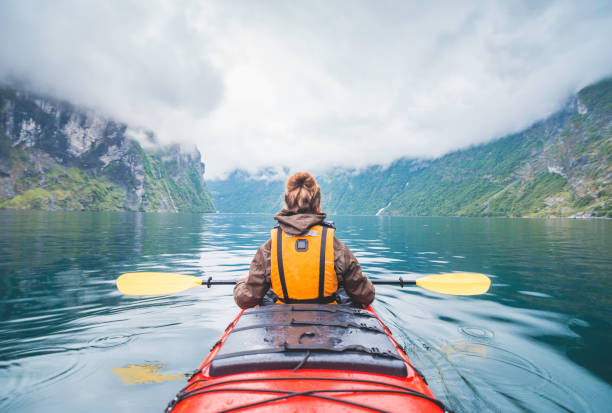
Which is the most effective kayak? The answer is “it depends.” Kayaks are designed to be used with specific types of water as well as for specific people and usages. This guide will provide two questions to help narrow down your options and choose the most suitable kayak for you. When you need breaking news about kayak, check here.
Where will you paddle?
What size kayak do you need?
What Are You Planning To Add To Your Cart?
Fishing, or recreational Kayak
Marshes and lakes are usually “flat-water” which is a way for paddlers to saying that conditions are calm. These waters are easy to navigate with no special equipment. Anglers might want a sit on top kayak with rod holders as well as tie downs for coolers, tackle box, etc.
Touring Kayak
The oceans and bays are often tranquil, but often they’re turbulent because they’re open and open to winds. The touring kayak is the most suitable choice in choppy weather because it is more stable in tracking (ability and speed) and buoyancy. The extra length of the boat, sometimes with a rudder and skeg which makes it much easier to follow. The kayak is able to be rescued by paddlers on their own in deep water due to its buoyancy and large airtight compartments.
Whitewater Kayak
Whitewater is available in six classes. These range from easy to maneuver areas , to more difficult terrains, up to impossible classes 6. Whitewater kayaks tend to be smaller to make them easier to maneuver. They also contain a rocker that allows the boat to go through waves.
Paddler Weight
The boats in all categories are available in a range of sizes to accommodate different size paddlers. To assist paddlers in choosing the right kayak size every kayak has the “weight capacity” rating. It’s not an ideal idea to select the weight capacity of a kayak that is the same as the paddler’s weight…you want there to be some cushion because more buoyancy can translate into greater control.
Boat Size
In general, larger kayaks slice through the water straighter (known as “tracking”), and thus are more efficient than their smaller counterparts. Smaller kayaks however are able to swing left and right a bit with each forward motion, making them very maneuverable in “skinny” waters. However, longer kayaks require more space and finesse in order to turn quickly. The shorter kayaks, however, need to take longer strokes to cover a greater distance. The best choice is contingent on the water conditions and your expectations. If you’re looking for a bit of each, a more compact touring model could be the perfect, one-boat-fits-all choice.
Kayak Weight
Boats also come with a range of weights. Consider how much the boat weighs and the challenges of loading it onto the roof of your vehicle. Paddlers are able to use load assist racks for loading their kayaks, but these do not take care of all the work. It is still necessary to lower the kayak until your waist.
Fine-Tuning Yourselection To The Perfect Kayak
here are a lot of nuances to kayaks, and when you find the right match for your dimensions, water and capabilities, the kayak becomes an extension of you.
Cockpit
Your feet (on the foot brace), your knees (on either the braces on the underside or thigh) and your hips (on both sides of your seat). These points should all provide support and comfort. To ensure stability and control it is necessary to secure your feet. Whitewater boats have cushioned seats that ensure a comfortable fitting and help support your body when you roll. The more flexible fit of a touring or sea kayak as opposed to a whitewater kayak is ideal for those who want to stretch and move about on long excursions. If you’re tall, ensure they are comfortable under the deck and upon the foot braces.
Seat
The seatback fit also needs to function with your PFD, so if you own one already test it in the kayak and adjust the seatback to suit. Some people experience discomfort that comes from the PFD riding too high or causing pressure points. Many PFDs come with mesh lower backs and many light touring and flatwater kayaks come with seatbacks that can be adjusted in the height. This improves the likelihood of finding a good combination. Spray skirts are recommended for open water excursions. Apply it to your body and then attach your PFD to the rim of the cockpit.
Width
The kayak’s width must be equal to your hips to ensure that you don’t slide across it. In the reverse and you feel as if you are wearing slim jeans after having a delicious Thanksgiving dinner. Sliders can cause instability, difficulty in controlling the water, and even discomfort.